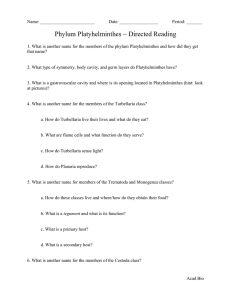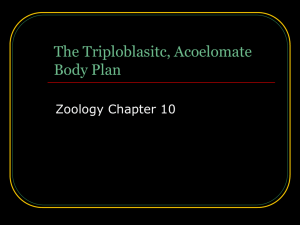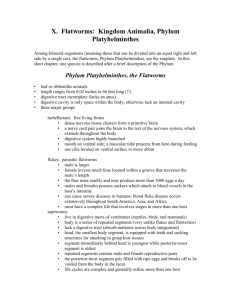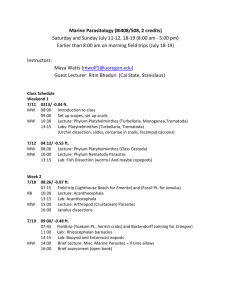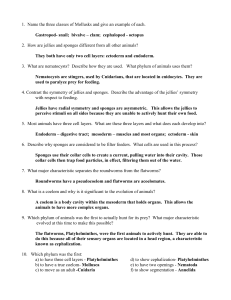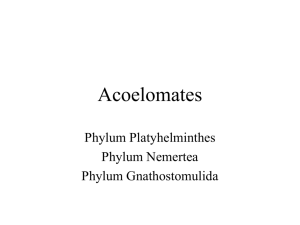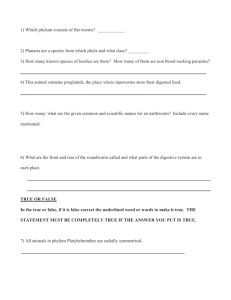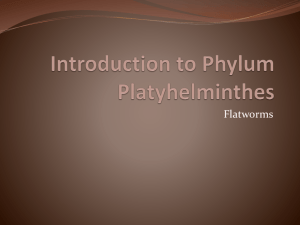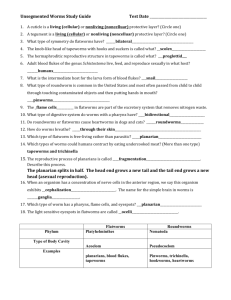Unit 8
advertisement
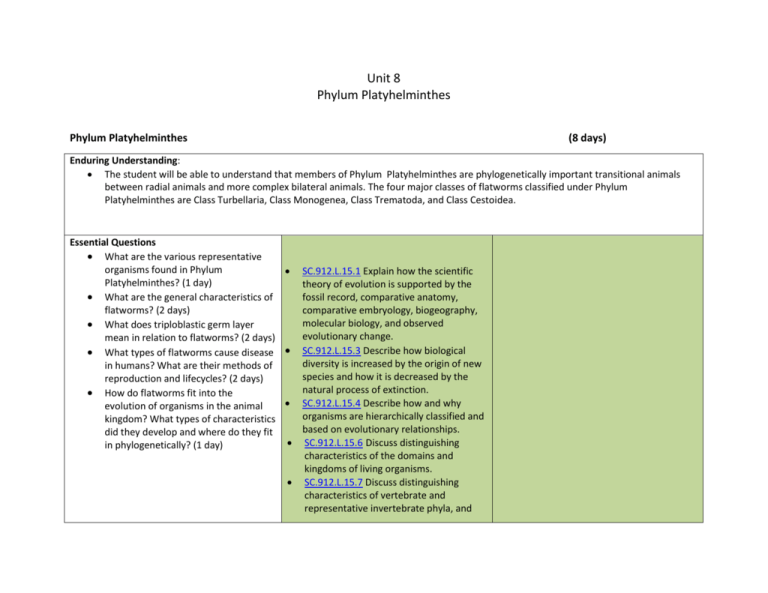
Unit 8 Phylum Platyhelminthes Phylum Platyhelminthes (8 days) Enduring Understanding: The student will be able to understand that members of Phylum Platyhelminthes are phylogenetically important transitional animals between radial animals and more complex bilateral animals. The four major classes of flatworms classified under Phylum Platyhelminthes are Class Turbellaria, Class Monogenea, Class Trematoda, and Class Cestoidea. Essential Questions What are the various representative organisms found in Phylum Platyhelminthes? (1 day) What are the general characteristics of flatworms? (2 days) What does triploblastic germ layer mean in relation to flatworms? (2 days) What types of flatworms cause disease in humans? What are their methods of reproduction and lifecycles? (2 days) How do flatworms fit into the evolution of organisms in the animal kingdom? What types of characteristics did they develop and where do they fit in phylogenetically? (1 day) SC.912.L.15.1 Explain how the scientific theory of evolution is supported by the fossil record, comparative anatomy, comparative embryology, biogeography, molecular biology, and observed evolutionary change. SC.912.L.15.3 Describe how biological diversity is increased by the origin of new species and how it is decreased by the natural process of extinction. SC.912.L.15.4 Describe how and why organisms are hierarchically classified and based on evolutionary relationships. SC.912.L.15.6 Discuss distinguishing characteristics of the domains and kingdoms of living organisms. SC.912.L.15.7 Discuss distinguishing characteristics of vertebrate and representative invertebrate phyla, and chordate classes using typical examples. The student will understand the biological contributions from Phylum Platyhelminthes. The student will be able to compare and contrast the anatomy and physiology of Phylum Platyhelminthes with previously studied phyla. The student will be able to identify representative organisms found in the four major classes of flatworms: Class Turbellaria, Class Trematoda, Class Monogenea, and Class Cestoidea. The student will be able to summarize the life cycles of some representative animals in Phylum Platyhelminthes, such as C. sinensis (Chinese liver fluke), Schistosome sp. (blood fluke), Taenia sp. (pork tapeworm), and Taeniarhynchus saginatus (beef tapeworm). The student will be able to explain the various parasitic relationships between members of Phylum Platyhelminthes and humans, such as Schistomiasis, Swimmer’s Itch, and Cysticercosis.
